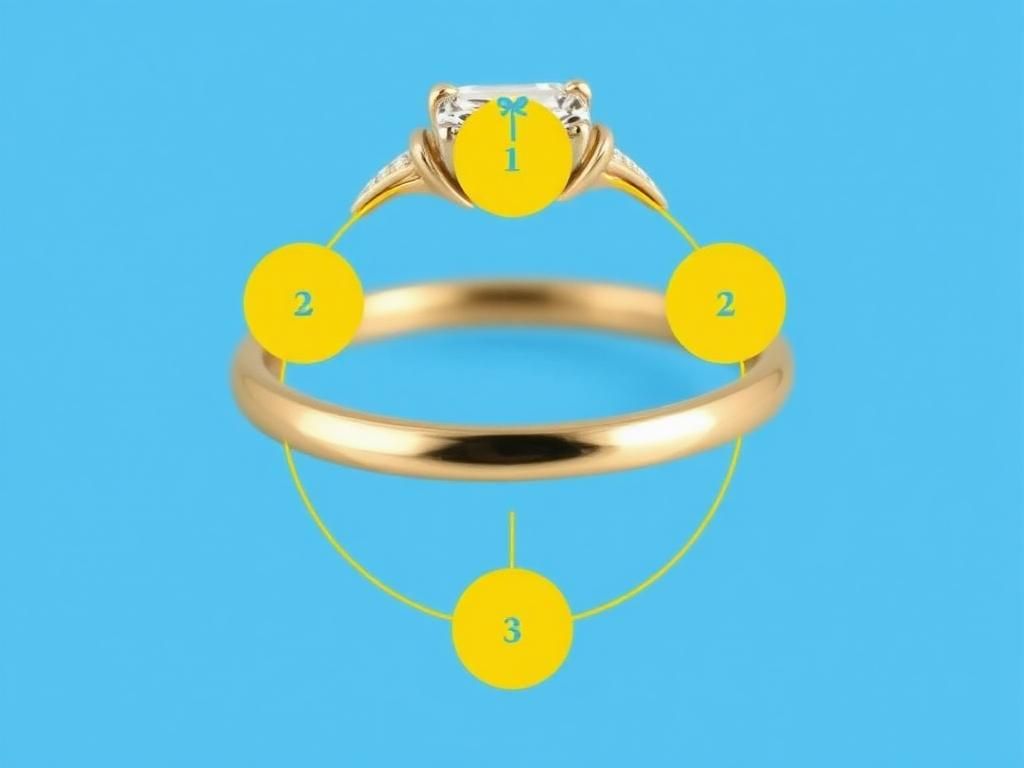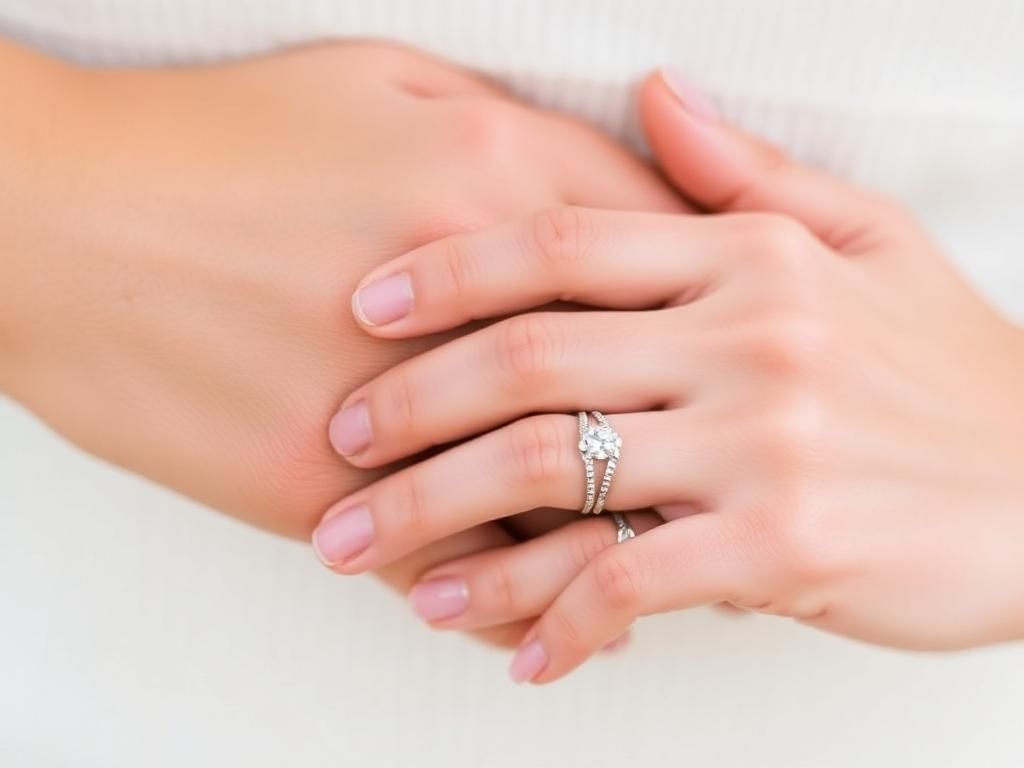Finding the perfect fit for a ring is not just about aesthetic appeal; it is crucial for comfort, security, and the overall enjoyment of wearing your jewelry. A ring that fits well enhances its beauty and ensures that it can be worn comfortably throughout the day. This article will delve into the factors that determine how a ring should fit, provide tips for achieving the perfect fit, and highlight the importance of proper ring fitting.
Understanding Ring Fit
What Does it Mean for a Ring to Fit Well?
A proper ring fit is one that meets your comfort needs without sacrificing security or aesthetics. When considering how should a ring fit, it’s essential to focus on the following characteristics of a well-fitted ring:
– Comfort: A ring should feel pleasant on your finger and not pinch or cause discomfort.
– Security: It should stay in place without slipping off or being too tight.
– Aesthetic appeal: A well-fitted ring enhances your overall look, adding to your personal style.
Why Proper Fit Matters
Understanding how should a ring fit goes beyond mere comfort. It has significant implications for your health and emotional well-being:
– Health implications: A poorly fitting ring can lead to issues such as circulation problems and swelling in your fingers.
– Practical considerations: A ring that fits correctly is easier to wear and less likely to get caught on clothing or other objects.
– Emotional significance: Rings often hold sentimental value, such as engagement rings or family heirlooms, making a proper fit essential for their emotional expression.
Factors Influencing Ring Fit
Finger Size Variations
Finger size is not static and can change for various reasons, which is a crucial factor in understanding how should a ring fit:
– Natural fluctuations: Your fingers can swell or shrink based on temperature, humidity, or physical activity.
– Seasonal changes: During warmer months, you may experience increased swelling, which can affect ring fit.
Ring Design and Structure
The design of a ring plays an enormous role in how should a ring fit. Key considerations include:
– Thickness of the band: Thicker bands may fit more snugly compared to thinner ones.
– Width and shape: Rings with a comfort fit design allow for easier movement of the finger, while traditional designs may fit tighter.
– Stone setting: The setting can affect how a ring sits on the finger; for instance, intricate stone settings might require a more specific fit to account for added bulk.
Ring Materials
The material of the ring influences both the fit and overall feel. Different materials have various effects, such as:
– Different materials: Gold, silver, platinum, and other alloys have distinct properties that can impact a ring’s fit and comfort level.
– Weight and density considerations: Heavier metals may feel different on the finger, affecting perceived tightness or looseness.
How to Measure Your Ring Size

DIY Methods for Measuring Finger Size
If you’re wondering how should a ring fit your finger, accurate measurement can help you find your size. Here are some DIY methods:
– Measuring with a string or paper strip:
– Wrap a piece of string or a paper strip around the base of your finger.
– Mark where the string or strip overlaps and measure the length against a ruler.
– Use a ring size chart to convert this measurement into a ring size.
– Using a ring sizer tool:
– Purchase a ring sizer tool or visit a jewelry store that offers them.
– Follow the instructions to find your size accurately.
Professional Measuring
For the most precise measurements, visit a jeweler. Professional measuring provides numerous benefits:
– Precision: A skilled jeweler can offer adjustments for specific design features and personal preferences.
– Timing: Make sure to get measured at a time of day when your fingers are at their normal size, avoiding times of swelling or contraction.
Assessing the Fit of the Ring
Signs of a Good Fit
Once you’ve chosen a ring, assessing its fit is equally important. Consider these signs of a good fit:
– The ring should slide over your knuckle smoothly.
– It should feel snug without causing pain or discomfort.
– It should not excessively spin on your finger, indicating a perfect fit.
Signs of Poor Fit
Understanding how should a ring fit includes recognizing when it does not fit well:
– Ring too tight:
– You may experience discomfort and difficulty in removing the ring.
– Swelling or pain in your finger can occur due to constriction.
– Ring too loose:
– The ring may easily spin or, in some cases, fall off your finger.
– There’s an increased risk of losing your ring if it’s not secure.
Adjusting Ring Fit
Solutions for Tight Rings
If your ring is too tight, here are some solutions to consider:
– Professional resizing:
– A jeweler can resize the ring, typically by expanding the band.
– Resizing has implications, so consult with your jeweler about potential risks and options.
– Temporary adjustments:
– Consider using silicone ring spacers or guards that fit inside the band, providing more room and comfort.
Solutions for Loose Rings
When a ring is too loose, here are some viable options:

– Professional resizing:
– Similar to tight rings, resizing ensures a perfect fit without compromising the ring’s design.
– Temporary fixes:
– You might use adhesive tape or sizing beads that can provide a more custom fit until you can have it resized.
Ring Care and Maintenance for Fit
Regular Size Checks
Regular checks are essential to maintain a proper fit. Consider how factors like weight fluctuations, lifestyle changes, or pregnancy can influence finger size:
– Monitoring size periodically ensures that your ring continues to fit comfortably.
Caring for Your Rings
Proper care helps maintain your ring’s shape and size over time. Here are some care tips:
– Keep your rings clean and store them safely to avoid deformity or damage.
– Regularly visit your jeweler for maintenance checks to ensure everything remains in optimal condition.
Conclusion
Understanding how should a ring fit is essential for comfort and aesthetics. A properly fitting ring enhances your daily experience and helps you fully enjoy the jewelry you love. Make it a priority to measure your rings accurately and consult professionals when in doubt regarding adjustments. Your rings are a symbol of expression, commitment, and beauty—ensure they fit just right.
FAQs
How does temperature affect ring fit?
Temperature changes can cause your fingers to swell or shrink. Warm weather often leads to swelling, while colder temperatures can result in smaller finger sizes. It’s essential to consider these variations when assessing how should a ring fit.
Can I resize any type of ring?
Most rings can be resized, but some settings, particularly those with intricate work or fragile designs, may be more challenging to adjust. Always consult a professional jeweler about the best resizing options for your specific ring.
What is the average cost of resizing a ring?
The cost of resizing a ring can vary significantly depending on the type of ring, the material, and the extent of the resizing. Typically, prices can range from $20 to $100 or more.
How often should I check my ring size?
You should check your ring size whenever you experience noticeable changes in weight or finger size, such as after pregnancy, weight loss, or seasonal changes. Regular checks are advisable—ideally every six months.
What if my fingers are swollen?
If your fingers are swollen, it’s best to avoid wearing rings until the swelling subsides. You can measure your size at a time when your fingers are most stable to get an accurate reading.
How can I maintain the shine on my ring?
Regular cleaning with a soft cloth and appropriate jewelry cleaner will help maintain its shine. Avoid exposing your rings to harsh chemicals and store them properly.
| Aspect | Importance |
|---|---|
| Comfort | A well-fitted ring enhances wearing experience |
| Security | Prevents loss and keeps the ring in place |
| Aesthetic Appeal | Complements style and reflects personal expression |
| Health | Avoids issues like circulation problems |
| Practicality | Ensures ease of wear in daily activities |